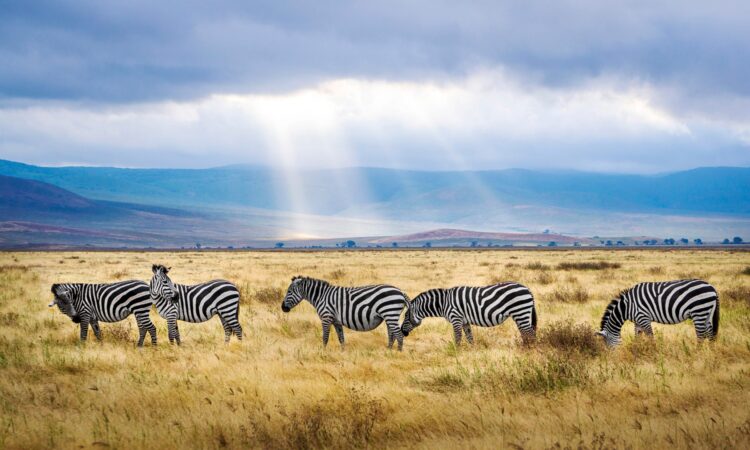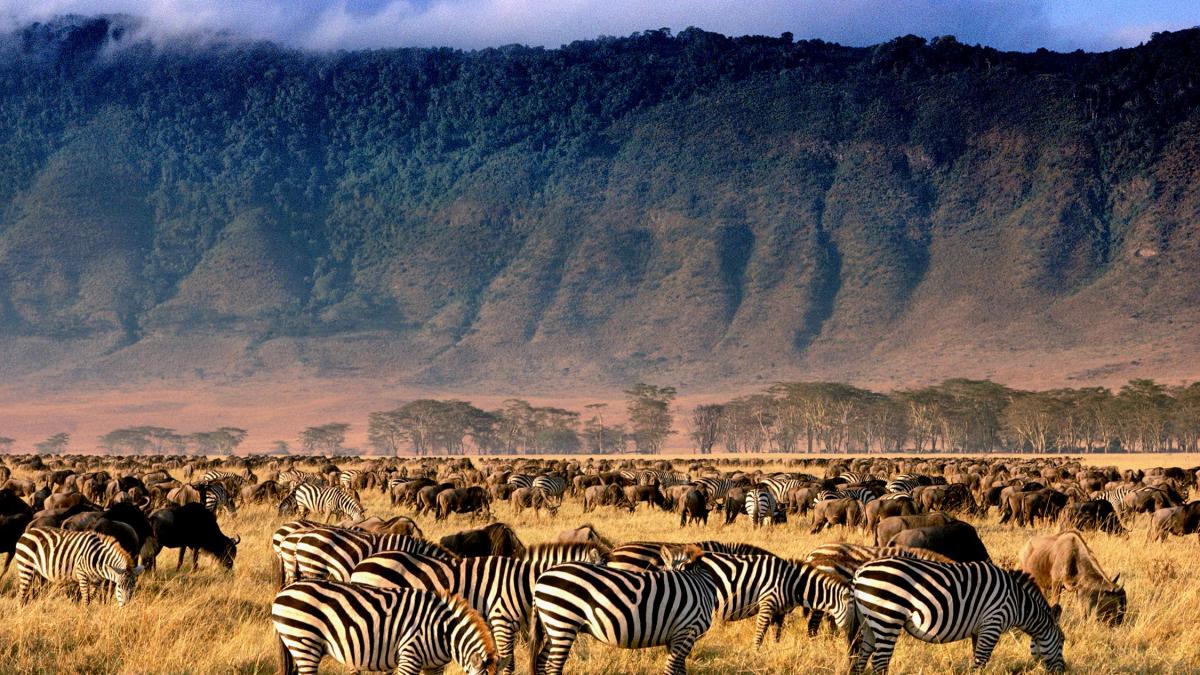Ngorongoro Crater : The Natural Wonder of East Africa : Ngorongoro Crater, located in Tanzania, is a geological marvel and a UNESCO World Heritage Site that captivates visitors with its awe-inspiring beauty and abundant wildlife. This breathtaking caldera, formed millions of years ago, is often referred to as the “Garden of Eden” due to its unique ecosystem and extraordinary biodiversity. In this comprehensive travel article, we will explore the wonders of Ngorongoro Crater, highlight its attractions, and guide you on an unforgettable journey to this natural wonder of East Africa.

Ngorongoro Crater is the largest intact volcanic caldera in the world, spanning approximately 260 square kilometers (100 square miles) and reaching a depth of over 600 meters (1,970 feet). The caldera was formed when a massive volcano collapsed on itself millions of years ago, creating a fertile and self-contained ecosystem within its walls.
The unique combination of altitude, climate, and geographical features within Ngorongoro Crater has created a diverse and self-sustaining ecosystem. The caldera is home to a remarkable variety of flora and fauna, including grasslands, acacia woodlands, swamps, and freshwater lakes. This diversity supports an abundance of wildlife, making Ngorongoro Crater one of the most sought-after safari destinations in East Africa.
Ngorongoro Crater is not only a natural wonder but also an important cultural site. It is home to the Maasai people, who have inhabited the area for centuries. The Maasai have a deep connection to the land and its wildlife, maintaining their traditional way of life and coexisting with the wildlife within the crater. Visiting Ngorongoro provides an opportunity to learn about Maasai culture, traditions, and their harmonious relationship with nature.
Exploring Ngorongoro Crater:
Embarking on a Tanzania wildlife safari is an experience like no other. The crater’s enclosed environment creates a natural sanctuary for a vast array of wildlife, including elephants, lions, leopards, buffalos, rhinoceros, and numerous bird species. As you venture through the crater’s grassy plains and forests, you will have the chance to witness these magnificent animals in their natural habitat, observing their behaviors and interactions up close.

Game drives are the most common way to explore Ngorongoro Crater, allowing visitors to traverse the crater floor and witness its stunning landscapes and wildlife. Knowledgeable guides will navigate the tracks, providing insights into the flora and fauna while ensuring your safety. Along the way, there are designated viewing points that offer panoramic vistas of the crater, allowing you to fully appreciate its vastness and natural beauty.
A visit to Ngorongoro Crater often includes a trip to the nearby Olduvai Gorge, an archaeological site of great historical significance. This site is known as the “Cradle of Mankind” as it has yielded important fossil discoveries, including early human remains and ancient tools. Explore the museum at the site to learn about human evolution and the remarkable discoveries made in this region.
Cultural Encounters and Community Engagement:
Engaging with the Maasai people is a highlight of any visit to Ngorongoro Crater. Take the opportunity to visit a Maasai village and interact with the locals, gaining insight into their traditions, rituals, and daily life. Learn about their distinctive clothing, jewelry, and warrior traditions. Engage in traditional dances, sample local cuisine, and support the community by purchasing their handmade crafts and products.
It is committed to the conservation of its unique ecosystem and the well-being of the local communities. Responsible tourism practices are encouraged to minimize the impact on the environment and preserve the delicate balance of the crater’s ecosystem. Visitors can contribute by respecting the rules and regulations, supporting community-based initiatives, and being mindful of their ecological footprint.
Practical Information and Tips:
Ngorongoro Crater can be visited year-round, but the dry season from June to October is generally considered the best time for wildlife viewing. During this period, animals tend to gather around the crater’s water sources, increasing the chances of sightings. The wet season from November to May offers lush landscapes and fewer crowds, but some areas may become inaccessible due to heavy rainfall.
Various accommodations, ranging from luxury lodges to tented camps, are available around Ngorongoro Crater. These establishments offer comfortable amenities, delicious cuisine, and knowledgeable staff who can arrange game drives and other activities. It is advisable to book in advance, especially during peak seasons, to secure your preferred accommodation.
While Ngorongoro Crater is a safe destination for tourists, it is essential to follow the guidance of your guide and adhere to park regulations. This includes staying within designated areas, respecting wildlife, and maintaining a safe distance from animals. It is also advisable to bring appropriate clothing, including hats, sunscreen, and insect repellent, and to consult with a healthcare professional regarding any necessary vaccinations before traveling.
Ngorongoro Crater is a natural wonder that showcases the raw beauty and incredible biodiversity of East Africa. From the abundant wildlife and stunning landscapes to the rich cultural heritage of the Maasai people, a journey to Ngorongoro Crater is an unforgettable experience. As you embark on your adventure, remember to be a responsible traveler, respecting the environment and engaging with the local communities. Discover the magic of Ngorongoro Crater, and create memories that will last a lifetime.


